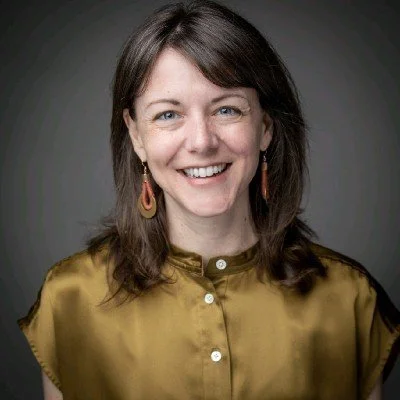Culture is seen as meaningful dynamics of a community — connections and relationships, rituals and traditions, languages, and well-being. The assets that communities value, yet are often not seen, understood, or mapped in the traditional investment equation, causes enormous underinvestment in culture. The concept of investing in culture and in artists themselves as central articulations of our neighborhoods and communities is a critical piece in transforming a “missing market” to invest in. What if investors saw the worth of artists as key actors in building new markets for community-led climate and health solutions?
Read MoreThe creation of financial centers in Philadelphia that will blend the services of a nonprofit loan fund with a consumer-focused credit union, creating a continuum of financial services and access to capital for every need. Finanta Credit Union focuses on creating pathways for the underbanked to enter the financial mainstream, now opening in North Philadelphia with a full suite of established and tested products.
Read MoreBarriers to home ownership and property retention have led to vast gaps in wealth, education, and health outcomes in Black and Brown communities. The Growth Collective focuses on real estate assets in divested communities across Philadelphia to create development plans that establish the land and property as valuable impact assets that anchor neighborhoods and accrue to the benefit of long-term residents. Learn about holistic solutions for investing in safer, cleaner, and greener neighborhoods.
Read MoreInstitutional food has massive economic, health, and equity opportunities. To envision a centralized meal production facility in Philadelphia that pairs with a workforce development program and values-based food-sourcing practices will build a resilient regional food system that feeds Philadelphia’s future.
Read MoreAttending the Total Impact Summit ‘24, the leader of Transform Finance shines a light on the tensions simmering while navigating the primary topics of the conference. This article lifts a lens on what he sees as primary methods for change at the Summit — the high density of individuals, family offices, and small foundations that are types of asset owners with the most flexible and nimble ability to make changes to their approach for impact investing.
Read MoreSustainVC believes that their strategy not only benefits cities with a smaller VC presence, but it also paves the way for more venture investors and entrepreneurs to achieve success, which can be a flywheel for further economic growth in hub regions.
Read MoreWhether you care about the vitality of America’s small business economy, the resilience of our manufacturing supply chains, local business ownership, or structural inequality—employee ownership (EO) is an impact investment thesis that offers over-indexed impact returns.
Read MoreWe need to educate people – individuals, neighborhoods, all types of organizations, philanthropists, politicians, legislators – on the capacity and opportunity that the arts provide, as well as the influence the arts have on the world around us. The arts can be used to support many of the development and equity challenges we face today. How do we lift leadership that recognizes, and rewards, the value of arts and culture in contributing to vibrant, thriving communities.
Read MoreAs counsel for many socially-conscious businesses, perhaps the most frequent early-stage question fielded from entrepreneurs is whether they should organize their business as a traditional business entity or as one of the newer, alternative entities that many socially responsible businesses are increasingly using in recent years. While there is no one right answer to this question, Royer Cooper Cohen Braunfeld attorneys in the Corporate & Business Group weigh in with some key considerations that should help entrepreneurs decide on how they want to proceed.
Read MoreEarlier this year, a significant milestone was achieved for NeedsList—founders successfully exited to a values-aligned company that shares their values and is committed to scaling the companies impact. As the Founders of NeedsList shared this news with networks, they were struck by the number of impact founders asking us for advice and to share the journey. With so few resources and case studies available to impact entrepreneurs, NeedsList hopes that their story can shed some light on what was learned.
Read More










